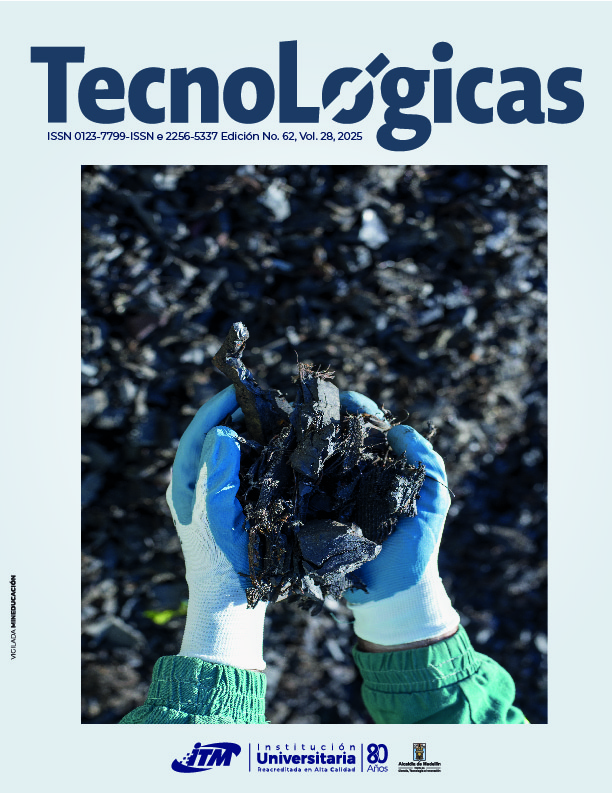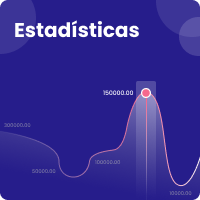Evaluación de una centrífuga de discos semicontinua para la cosecha de la bacteria Tsukamurella Paurometabola cepa c-924
Resumen
La centrífuga de discos constituye un equipo ampliamente utilizado en la industria biotecnológica actual, a causa de las múltiples ventajas que ofrece, siendo las más importantes su elevada flexibilidad operacional, robustez y velocidad de procesamiento. El objetivo de esta investigación fue el de evaluar si una centrífuga de discos del tipo semicontinua puede ser empleada para cosechar células de Tsukamurella paurometabola cepa C-924. principio activo del bionematicida ecológico HeberNem-S®, en sustitución de las centrífugas tubulares utilizadas en la actualidad. La metodología usada consistió en el desarrollo de un diseño estadístico factorial del tipo 23, en el cual se tomaron en cuenta tres parámetros de entrada: caudal de alimentación [Qalim], peso húmedo de la suspensión celular diluida a centrifugar [PHalim], y tiempo entre descargas [tdesc]. Los parámetros de salida tomados en cuenta fueron: peso húmedo de la biomasa concentrada [PHbio] y el porcentaje de recobrado [%Rec], los cuales deben presentar valores superiores a 600 g/L y 95 %, respectivamente, para obtener un rendimiento final acorde con las normas de calidad establecidas para este producto biotecnológico. Los resultados obtenidos fueron que los valores promedios para PHbio y %Rec fueron de 657.28 g/L y 97.43 %, respectivamente, los cuales cumplieron con las normas de calidad para esta etapa. El diseño experimental se optimizó para determinar los valores óptimos para los 3 parámetros de entrada, obteniéndose los siguientes valores: 64 L/h para Qalim, 176 g/L para PHalim y 5 min de tdesc. La centrífuga de discos semicontinua evaluada puede ser implementada satisfactoriamente en la etapa de cosecha del proceso de producción de HeberNem®, reemplazando por tanto las centrífugas tubulares actualmente empleadas. Se emplearon los programas estadístico-matemáticos Statgraphics Centurion® XV.II, Microsoft Excel® y MATLAB® v. 7.0.1 para el procesamiento de los datos y resultados.
Referencias bibliográficas
M. C. Flickinger, Downstream industrial biotechnology: recovery and purification. New Jersey, U.S.A.: John Wiley & Sons, Inc., 2013. https://www.wiley.com/en-us/Downstream+Industrial+Biotechnology%3A+Recovery+and+Purification-p-9781118131244
R. G. Harrison, P. W. Todd, S. R. Rudge, and D. P. Petrides, Bioseparations science and engineering, 2nd ed. New York, U.S.A.: Oxford University Press, 2015. https://pdfcoffee.com/bioseparations-science-and-e-ngineering-pdf-free.html
Y. Chisti, “Strategies in Downstream Processing”, in Bioseparation and Bioprocessing: A Handbook, vol. 2, G. Subramanian, Ed. New York, U.S.A.: Wiley-VCH, 1998, pp. 3-30. https://doi.org/10.1016/S0734-9750(99)00012-9
W. W.-F. Leung, Centrifugal Separations in Biotechnology, 2nd ed. Oxford, U.K.: Elsevier, 2020. https://doi.org/10.1016/C2017-0-03265-2
Joseph et al., “A Scale-Down Mimic for Mapping the Process Performance of Centrifugation, Depth, and Sterile Filtration”, Biotechnology and Bioengineering, vol. 113, no. 9, pp. 1934-1941, 2016. https://doi.org/10.1002/bit.25967
R. Kempken, A. Preissmann, and W. Berthold, “Assessment of a Disc Stack Centrifuge for Use in Mammalian Cell Separation”, Biotechnology and Bioengineering, vol. 46, no. 2, pp. 132-138, 1995. https://doi.org/10.1002/bit.260460206
P. H. Chlup, D. Bernard, and G. G. Stewart, “Disc Stack Centrifuge Operating Parameters and Their Impact on Yeast Physiology”, Journal of the Institute of Brewing, vol. 114, no. 1, pp. 45-61, 2008. https://doi.org/10.1002/j.2050-0416.2008.tb00305.x
M. Schmidt, R. Krützfeldt, and A. Roß, “Validation of a separator CSA8 regarding sterilization for aseptic processes”, Process Biochemistry, vol. 34, no. 8, pp. 769-776, 1999. https://doi.org/10.1016/S0032-9592(98)00151-4
M. Iammarino, J. Nti-Gyabaah, M. Chandler, D. Roush, and K. Göklen, “Impact of Cell Density and Viability on Primary Clarification of Mammalian Cell Broth”, BioProcess International, vol. 5, pp. 38-50, 2007. https://www.bioprocessintl.com/filtration/impact-of-cell-density-and-viability-on-primary-clarification-of-mammalian-cell-broth
L. K. Shekhawat, J. Sarkar, R. Gupta, S. Hadpe, and A. S. Rathore, “Application of CFD in Bioprocessing: Separation of mammalian cells using disc stack centrifuge during production of biotherapeutics”, Journal of Biotechnology, vol. 267, pp. 1-11, 2018. https://doi.org/10.1016/j.jbiotec.2017.12.016
M. Yang, X. Liu, J. A. Howell, and H. Cheng, “Analysis and estimation/prediction of the disk stack centrifuge separation performance – Scaling from benchtop fixed rotor type to disk stack centrifuges”, Separation Science and Technology, vol. 55, no. 14, pp. 2615-2621, 2019. https://doi.org/10.1080/01496395.2019.1636820
L. Stoffels, A. Finlan, G. Mannall, S. Purton, and B. Parker, “Downstream Processing of Chlamydomonas reinhardtii TN72 for Recombinant Protein Recovery”, Frontiers in Bioengineering and Biotechnology, vol. 7, no. 383, pp. 1-13, 2019. https://doi.org/10.3389/fbioe.2019.00383
P. Esmaeilnejad-Ahranjani and M. Hajimoradi, “Optimization of industrial-scale centrifugal separation of biological products: comparing the performance of tubular and disc stack centrifuges”, Biochemical Engineering Journal, vol. 178, p. 108281, 2022. https://doi.org/10.1016/j.bej.2021.108281
V. Ott et al., “Qualification of a Single-Use Disk Stack Separator for Cell Separation in Mammalian Cell-Based Antibody Production”, Chemie Ingenieur Technik, vol. 94, no. 12, pp. 1-9, 2022. https://doi.org/10.1002/cite.202200096
J. König, N. Janssen, and U. Janoske, “Visualization of the deposition mechanisms in disk stack centrifuges with an acrylic glass bowl top and high-speed image processing”, Separation Science and Technology, vol. 56, no. 3, pp. 640-652, 2021. https://doi.org/10.1080/01496395.2020.1728326
H. Salte, J. M. P. King, F. Baganz, M. Hoare, and N. J. Titchener-Hooker, “A Methodology for Centrifuge Selection for the Separation of High Solids Density Cell Broths by Visualisation of Performance Using Windows of Operation”, Biotechnology and Bioengineering, vol. 95, no. 6, pp. 1218-1227, 2006. https://doi.org/10.1002/bit.21102
M. Marin, J. Mena, R. Franco, E. Pimentel, and I. Sánchez, “Effects of the bacterial-fungal interaction between Tsukamurella paurometabola C-924 and Glomus fasciculatum and Glomus clarum fungi on lettuce microrrizal colonization”, Biotecnología Aplicada, vol. 27, pp. 48-51, 2010. http://scielo.sld.cu/pdf/bta/v27n1/bta05110.pdf
M. M. Bruzos, J. M. Campos, P. C. Chávez, R. M. Valdivia, and E. P. Vázquez, “Interacción de Tsukamurella paurometabola C-924 con Rhizobium leguminosarum biovar phaseoli CFH en el cultivo de frijol”, Acta Agronómica, vol. 62, no. 1, pp. 52-58, 2013. http://www.scielo.org.co/pdf/acag/v62n1/v62n1a08.pdf
M. Marín et al., “Zea mays L. plant growth promotion by Tsukamurella paurometabola strain C-924”, Biotecnología Aplicada, vol. 30, pp. 105-110, 2013. http://scielo.sld.cu/pdf/bta/v30n2/bta04213.pdf
Y. L. Paneque, N. González, L. M. Crespo, J. Zamora, R. M. Segura, and A. Pérez, “Modelo matemático para predecir la estabilidad a temperaturas cercanas al ambiente de la bacteria Brevibacterium celere C-924”, Revista de Investigación, Desarrollo e Innovación, vol. 13, no. 2, pp. 367-379, 2023. https://doi.org/10.19053/20278306.v13.n2.2023.16841
P. F. Stanbury, A. Whitaker, and S. J. Hall, Principles of Fermentation Technology, 3rd ed. Oxford, U.K.: Butterworth-Heinemann, 2017. https://doi.org/10.1016/C2013-0-00186-7
Descargas
Derechos de autor 2025 TecnoLógicas

Esta obra está bajo una licencia internacional Creative Commons Atribución-NoComercial-CompartirIgual 4.0.

| Estadísticas de artículo | |
|---|---|
| Vistas de resúmenes | |
| Vistas de PDF | |
| Descargas de PDF | |
| Vistas de HTML | |
| Otras vistas | |








